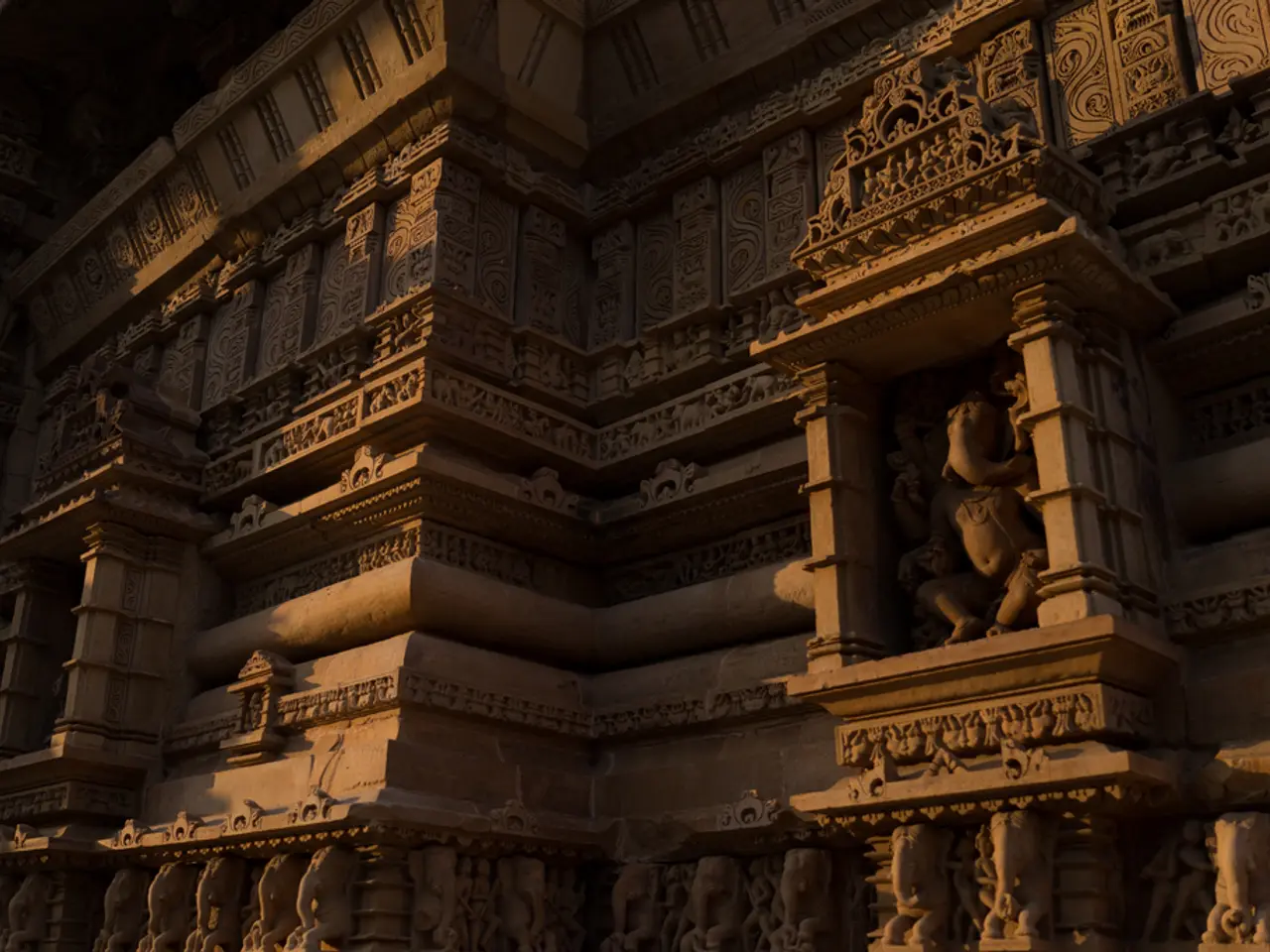Exploring the Enigmatic Decorations of Ancient Egyptian Tombs: Uncovering the Symbolic Items and Artifacts
Ancient Egyptian tombs were adorned with a variety of items and symbols that held deep religious, cultural, and protective significance. These decorations, carefully chosen to secure the deceased's safe passage and well-being in the afterlife, offer a fascinating glimpse into the beliefs and customs of this ancient civilization.
Common decorative items and symbols found in tombs include the Crook and Flail, symbols of pharaonic authority and power. The Crook represents the pharaoh as shepherd and protector, while the Flail signifies punishment and order. Together, they embody the dual role of benevolent ruler and stern enforcer, linking the pharaoh to gods Osiris and Horus.
The Lotus Flower, or Sesen, is another symbol commonly found in tomb decorations. It symbolizes rebirth, purity, and spiritual enlightenment, and was associated with the sun god Ra. The Djed Pillar, representing stability and resurrection, was prominent in rituals and tomb carvings, especially at Abydos, reinforcing themes of eternal life and resurrection.
The Ankh, the symbol of life, was frequently found in tomb inscriptions and artifacts as a representation of eternal life and protection in the afterlife. The Was Scepter, symbol of power and dominion, was often held by gods and pharaohs, indicating control over the forces of chaos and maintaining order.
The Scarab Beetle, emblematic of rebirth, regeneration, and transformation, was a popular motif in tomb jewelry and amulets to ensure resurrection. The Eye of Horus, a protective symbol representing divine protection, royal power, and healing, often featured in tomb paintings and amulets to guard the deceased against evil.
Jewelry and amulets, including the menat and the usekh, were decorated with symbolic motifs such as falcons, vultures, lions, and geometric forms. Gold, carnelian, turquoise, and lapis lazuli were commonly used for their material and symbolic value.
Hieroglyphs, inscriptions on tomb walls, sarcophagi, and burial goods, depicted prayers, spells, hymns, and scenes of the afterlife. These served to honor deities and ensure the deceased’s safe journey and existence beyond death.
Tomb decorations served not only as a means of honoring and remembering the deceased for generations to come but also as a means of ensuring the deceased's survival and providing them with the necessary sustenance and protection. Understanding the purpose and significance of these tomb decorations provides a deeper appreciation for the beliefs and customs of ancient Egypt.
[1] Egyptian Mythology: Gods, Goddesses, and Traditions [2] Ancient Egyptian Religion [3] Symbolism in Ancient Egyptian Art [4] The Book of the Dead [5] Ancient Egyptian Funerary Art
- The Crook and Flail, symbols of authority and power, link the pharaoh to the gods Osiris and Horus in the realm of furniture, decor, and lifestyle.
- The Lotus Flower, symbolizing rebirth and spiritual enlightenment, was associated with the sun god Ra in the field of food-and-drink, personal-growth, and fashion-and-beauty.
- The Djed Pillar, representing stability and resurrection, was prominent in the home-and-garden, learning, and education-and-self-development sectors, especially in Abydos.
- The Ankh, symbol of life and protection, was frequently found in books about Ancient Egyptian religion and mythology.
- The Was Scepter, symbol of power and dominion, can be studied in works about power and leadership in the entertainment and cooking fields.
- Jewelry and amulets, decorated with symbolic motifs, can be found in books about fashion-and-beauty and spiritual beliefs, providing insights into their material and symbolic value.




